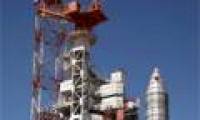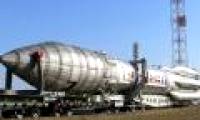
Russia on September 28 successfully launched the rocket that Proton-M put a satellite into orbit, in the first launch after the May failure, AFP said.

According to information from Voice of Russia, ITAR-TASS leads the Russian space industry, saying it intends to use Proton-M boosters until 2025.

Vice President of the Russian Federal Space Agency (Roscosmos) Alexander Lopatin said Proton-M boosters were blown up due to unusual activity of angular velocity sensors, causing

The Russian Space Agency (Roscosmos) will halt the launch of the Proton-M rocket with the Briz-M propulsion system after the missile fails to put two telescopes on orbit due to the

The Proton-M rocket will bring SES-4 satellites, the largest and most powerful satellite among SES satellites into orbit.
 Russia on September 28 successfully launched the rocket that Proton-M put a satellite into orbit, in the first launch after the May failure, AFP said.
Russia on September 28 successfully launched the rocket that Proton-M put a satellite into orbit, in the first launch after the May failure, AFP said. According to information from Voice of Russia, ITAR-TASS leads the Russian space industry, saying it intends to use Proton-M boosters until 2025.
According to information from Voice of Russia, ITAR-TASS leads the Russian space industry, saying it intends to use Proton-M boosters until 2025. Vice President of the Russian Federal Space Agency (Roscosmos) Alexander Lopatin said Proton-M boosters were blown up due to unusual activity of angular velocity sensors, causing
Vice President of the Russian Federal Space Agency (Roscosmos) Alexander Lopatin said Proton-M boosters were blown up due to unusual activity of angular velocity sensors, causing The Russian Space Agency (Roscosmos) will halt the launch of the Proton-M rocket with the Briz-M propulsion system after the missile fails to put two telescopes on orbit due to the
The Russian Space Agency (Roscosmos) will halt the launch of the Proton-M rocket with the Briz-M propulsion system after the missile fails to put two telescopes on orbit due to the The Proton-M rocket will bring SES-4 satellites, the largest and most powerful satellite among SES satellites into orbit.
The Proton-M rocket will bring SES-4 satellites, the largest and most powerful satellite among SES satellites into orbit.
 NASA's 'Ninth Planet' Shows Signs of Being Friendly to Life
NASA's 'Ninth Planet' Shows Signs of Being Friendly to Life Why did American astronauts have to be quarantined when returning to Earth?
Why did American astronauts have to be quarantined when returning to Earth? China surprises the world by building a cable-stayed bridge 'above the clouds'
China surprises the world by building a cable-stayed bridge 'above the clouds' Why do women sleep less and wake up more than men?
Why do women sleep less and wake up more than men? Revealing the secret inside the stuffed animal claw machine, from there, summarizing experience to help you increase your winning rate many times over
Revealing the secret inside the stuffed animal claw machine, from there, summarizing experience to help you increase your winning rate many times over What would happen if you dug a hole through the Earth and jumped in?
What would happen if you dug a hole through the Earth and jumped in? Camera takes a photo that lasts 1,000 years
Camera takes a photo that lasts 1,000 years Was there nuclear war in ancient times?
Was there nuclear war in ancient times?